
On wings of the wind, O’er the dark, rolling deep, Angels are coming, To watch over thee 1
The Connemara Cradle Song is an old Irish lullaby in which a fisherman’s wife prays to the wind to keep her husband safe whilst he is out fishing for herring. It is a sweet evocation of the perils of the fishing industry and the interplay between the human and non human world. There is a hint of fear, the wind can power the boat’s sail back home, or swamp it, so she is looking forward to the day when her husband will not have to risk his life out on the dangerous seas.
The currachs tomorrow will stand on the shore, And daddy goes sailing, sailing no more, The nets will be drying, the nets heaven blessed, And safe in my arms dear, contented he'll rest2
Today the herring and the fishing fleets are long gone and there are proposals to build an enormous wind farm, the first on the west coast of Ireland near the fishing grounds where the song is set3. So where once the fishing fleets and currachs crossed the seas, soon 30 giant wind turbines as high as the Eiffel Tower will swish across the horizon delivering 450 Mega watts of energy (which is less than half of what is produced by Dublin’s Poolbeg oil fired power plant).4 There’s a glossy website with locals foregrounded speaking in Irish and English about the community benefit fund that the wind farm promises to the area and the project promises local jobs and a contribution to Ireland’s legally binding 2050 Road to Zero fossil fuel commitment5. The windfarm is being built by Fuinneamh Sceirde Teoranta (FST) an umbrella company jointly owned by the Australian investment firm Macquarie Finance and the Canadian Ontario Teacher’s Pension Fund6.
However others have raised the alarm about the visual and environmental impacts of the scheme,7 and personally I find the prospect of a beautiful Irish seascape turned into another industrial view unbearable sad. This isn’t just happening offshore, across the island of Ireland onshore wind farms are being built, often in the teeth of opposition from locals as Ireland pivots away from fossil fuels8. The cherished views of many Irish generations soon won’t be available to the next as in many places they will be obscured by a forest of wind turbines or pylons9.
The Last Man Who Knew Everything
Not many people these days have heard of Thomas Young - in my view- The Man Who Invented Energy (and the subject of the 2006 book by Andrew Robinson called ‘The Last Man Who Knew Everything’)10. He was a polymath, doctor, linguist and possibly one of the most intelligent men who ever lived; anyone who has studied physics will have used his equations. He was a strange individual, for instance he experimented on his own eyes to test his theories about color vision and his students found his lectures incomprehensible. This might explain why he is less well known compared to his contemporaries such as Michael Faraday or Humphrey Davy.
Isacc Newton was another curmudgeon but also a genius, so Young’s oddness is unusual nor a slight on him, but it might go some way to explaining why his mind could land on a filter for nature that I think is both enormously useful, while perhaps also potentially deeply misleading at the same time. This is because Thomas Young was the first man who talked about ‘energy’ as a discrete entity: you could even say that Young invented the concept of ‘energy’ as we now use it today when in his 1802 lectures he said:
The product of the mass of a body into the square of its velocity may properly be termed its energy11
Of course before this people had noticed that putting more wood on a fire generated more heat and harnessing more oxen to a plough made it go faster for millennia. But prior to Young’s use of the word, people talked of sunshine, fire, gales of wind or lighting in situational circumstances. Isacc Newton had in the seventeenth century used the terms force, mass and gravity in his famous equations12, but he hadn’t used the word ‘energy’ or used it mathematically as Young did. What Young mainly meant when he talked about ‘energy’ in 1802 was as a metaphor for the pattern of behavior that arose from the burning of coal in the recently invented steam engine, the ability to do work pumping water or driving a locomotive along a track. Had Thomas Young been German (a language famously fond of compound words) he might have called it The Thing That Happens When You Put Coal Into An Engine And Burn It and Then Heat Water Which Makes Steam and Where An Iron Rod Move Faster Thus Pushing a Wheel (whew! - you can see why he didn’t go down that route).
But not being either German (or indeed Welsh also fond of compound words) you can see why he reached for the word ‘energy’ which had prior to that mainly been used as a description of a person’s ‘life force’. Jane Austen used it in her 1811 novel Sense and Sensibility:
Nor I, answered Marianne with energy13
Austen was not talking here about the amount of work her character was doing, nor would she would have understood what Young meant by saying coal was a source of ‘energy’. (We still use Austen’s meaning when we say ‘I have no energy today’.) But Young’s adaptation of the word was for the physical observation that the more coal you put in the boiler of a steam engine, the faster the pistons go and this extra work produced what he called ‘energy’ and which he could be accurately predicte with mathematical equations.
Other later 19th century engineers and scientists such as the German Justus von Liebig(chemistry)14, the French Gaspard-Gustave de Coriolis(mechanical engineering)15 and in particular the English physicist James Joule from Salford (thermodynamics and the man who stated the law of energy conservation) 16 found Young’s word ‘energy’ so useful that they too used the concept and slotted it into their equations. This was hugely useful because these equations accurately predicted behavior in the real world. Latterly in the twentieth century Albert Einstein formulated the famous equation: e=mc2.17
And because of the work of these brilliant scientists and engineers the word ‘energy’ is everywhere today. So most people think of ‘energy’ as something invisible that flows through the world, locked up in coal, oil or gas and released by burning or flowing around the world in currents of air or rays of sunshine. If they have a science background they might even think of it as a type of flow of electrons. We are all taught about the different types of energy in school: kinetic; chemical; mechanical and electrical and so on and that it cannot be destroyed but moves from one form to another.
What Did You Learn in School Today?
Okay, deep breath, I am going to say something that sounds absolutely bonkers, but please, please stay with me for a bit. Energy as thought of in this way does not exist. There is no invisible essence locked in lumps of coal, oil, gas, or floating around in the ether. You cannot abstract an essence called energy from the process that produces it. I am not saying that the equations using energy are invalid, they do work, and are used every single day in millions of calculations; I used to use them all the time. But what they are describing is a pattern (it has been described elsewhere in a new field of physics known as new materialism as inter-action) not an entity, but instead a way that things tend to happen in a certain way18. We can plug numerical values for e for energy into the engineering and scientific equations and they work - but it doesn’t mean that we know what energy really is, and it doesn’t matter because it produces consistent real world results that we can use (here’s an academic paper which states the same thing better than I could)19
There’s no reason at all you should take my word for something that sounds so ridiculous so I am going to back this up with some quotes from heavyweight Nobel Prize winning physicists, firstly the 1965 winner, Richard Feynman who said:
It is important to realise that in physics today, we have no knowledge of what energy is
and
The law is called conservation of energy; it states that there is a certain quantity, which we call energy that does not change in manifold changes which nature undergoes. That is a most abstract idea, because it is a mathematical principle; it says that there is a numerical quantity, which does not change when something happens. It is not a description of a mechanism, or anything concrete; it is just a strange fact that we can calculate some number, and when we finish watching nature go through her tricks and calculate the number again, it is the same.
Percy Williams Bridgeman, winner of the 1946 Nobel Prize for Physics said:
the energy concept has no meaning apart from a corresponding process20
Bridgeman’s words gives an alternative view of energy, not a ‘thing in itself’ but as a socially constructed process or system. I have recently been reading a recent fascinating article by a leading energy researcher Nicolas Labanca in the 2024 journal Thinking after Ivan Illich called ‘Some Key Aspects at Stake in the Social Construction of Energy ‘21(which I highly recommend reading in full as it explains this so much better than I could available at:
https://thinkingafterivanillich.net/wp-content/uploads/2023/06/Some-key-aspects-at-stake-in-the-social-construction-of-energy.pdfin)
where Labacana echoes Feynman and Bridgeman’s view of energy, not as a ‘thing’ but instead as a physically or socially embedded process:
Energy cannot be considered as an entity or a substance that underlies specific manifestations of it……
Rather, there are specific transformation processes—a cheetah running, a plane flying, a turbine spinning—to which energy is imputed and computed.22
In further proof that what we call ‘energy’ is a process or system Labanca discusses how there are some indigenous societies where the concept of ‘energy’ as we understand in our society does not exist:
As strange as it may seem, there are still societies where people still live without energy and its organizing constraints 23
Fire on the Mountain24

Labanca doesn’t give specific examples of this in his article, but here’s a thought experiment:
Say that you are a group of hunters around 3000 BC out on a cold winter’s night and you are getting pretty cold. So you decide to light a fire. The oldest men in the group knows that to do this you need to gather firewood, get a flint to produce a spark and blow air onto it in order to get the fire to light. Once it gets going you need to add more firewood to keep it going, and then you and your friends can all gather around and toast your hands and feet at it so it produces the desired result: warm humans. This may have been the earliest form of an ‘socially constructed energy system’ and the proto ‘equations’ for it might look like:
Firewood + flintspark + blowing air on spark = Fire
Fire = Heat
Heat + Proximity = Warm Humans
(These might be called the ‘Fire Equations’, the set of mental instructions which are independent of circumstances)
But the oldest man in the group also knows that the fire equations are only the start in the real world. For example he knows only some wood burns well, so the choice of wood matters; you need to site the fire carefully so that it is out of the wind that might extinguish it. He also knows that the youngest member of the group is a bit daft, so letting him look after the fire is probably not a good idea as he’s likely to wander off and let it go out.
So while the Fire Equations are an essential part of building a fire, but they are also not enough, as it still requires skill, experience and judgement to produce the right result, warm human bodies. Thus the process of fire making is a social contingent energy system: that is, it is dependent on particular environmental circumstances and the human personalities involved as well as skillful deployment of the Fire Equations.
In contrast, today I switch on my living room light. This is contingent on only one thing, have I paid my electricity bill? If I have, then: light; if I haven’t, then: no light. And across the country, millions of other people are doing the exactly the same, regardless of the weather, the political climate or the price of oil or gas. So the production of electricity appears to be non contingent, it doesn’t change with the weather, the human personalities involved, the political environment or the society (although not if you live in rural Ireland where they are having regular blackouts).25
Why does any of this matter? Well at the moment we are in the process of extensively retooling our energy system to include renewables like the giant windfarm proposed for Galway Bay. As I discussed here large energy transmission grids in modern societies are effectively giant spatially distributed machines with interconnecting components. Politicians like Ed Milliband, the British Secretary of State for Energy at the moment would have you believe that it’s just a question of swapping out one component from this machine, fossil fuel for another renewable sources like wind or solar, that energy sources are (in a word that sounds pretentious but is so useful I will use it anyway) fungible, that is it won’t matter what the original energy source came from as the outcome will still be the same: lights on at the end.26 According to this philosophy we don’t need to change anything about our energy culture apart from the original energy source which is changing from fossil fuels to renewables; this has been dubbed the Road to Net Zero and Ireland is also participating in this27.
We Didn’t Start the Fire…28

The excellent Substack Eigenvalues (which I highly recommend) written by David Turver discusses in detail why this view is profoundly mistaken29. The production of electricity for the last 100 years has been primarily dependent on thermal processes of burning fossil fuels, coal and latterly oil and gas (although there has been some hydroelectric power as well) and transporting this via high voltage electricity lines to the consumer who is usually at some distance away in a city. The whole energy grid transmission system has been designed around this: you burn more, you get more. In other words, it’s scalable, more in, more out. Because of the laws of thermodynamics there are energy losses along the way, but the person at the end of the chain doesn’t care where the electricity which flows from the plug comes from, whether it’s from oil, gas, coal or nuclear. All they care about is a reliable supply of electricity and their bill at the end of the month.
Wind was extremely inconvenient for the purpose of pumping [water from mines] because in these latitudes it is inconstant: it was costly, too, because “at any time the labourers might be obliged to sit at the pit’s mouth for weeks together whistling for a gale. (H.G. Wells, in Anticipations of the Reactions of Mechanical and Scientific Progress upon Human Life and Thought, 1901.)
But as HG Wells pointed out in 1901, as does David Turver in Eigenvalues today, the view that wind or solar are simply replacements for fossil fuels is not true. Wind and solar are intermittent sources of energy and not scalable. So if the wind doesn’t blow, or the sun doesn’t shine, a thousand wind turbines or solar panels will produce exactly the same output as one: that is zero. So replacing a coal plant with a giant windfarm is not the same; the latter requires far more active management (I have discussed this in detail here). It also requires reliable backup generation to be available on tap when renewables fail and this will need to be either nuclear or fossil fuel based, so a shadow energy system is required in tandem when renewables fail.
One example of this came from a recent phenomenon of ‘Dunkelflaute’, that is a wind drought which happened in Germany for a month in 2024 and which drove electricity prices across Europe to record highs as demand for Norwegian hydro sources and French nuclear soared30. It is likely therefore that when renewables become more embedded in our energy systems that the costs of parallel backup sources of energy powered by fossil fuel or nuclear or battery storage will need to be factored into electricity prices thus making the implementation of renewables much more expensive than its proponents would have you believe (see Eigenvalues for more detail)31. And even many scientists who have been involved in the discussions around the Road to Net Zero have grave misgivings about the project. 32
We’re Gonna Rock Down To Electric Avenue…
In my previous essay here I discussed a 2009 episode of the BBC TV series ‘Bang Goes the Theory: The Human Power Station’ where they powered a normal household of four people with a warehouse full of people desperately cycling to keep up the power for all the household devices they were using. This required 80 people pedaling full blast to power the shower, fridges and ovens of a household of four people for a single day. I observed in that essay that it would be impossible to maintain this lifestyle if this was what actually happened, very few people could sit and watch 80 human beings sweat while they blithely went about their day switching on lights and washing machines, most of us couldn’t live with the guilt.
Since then the demands of the internet and the recent introduction of Artificial Intelligence have driven up the energy requirements of the average consumer far beyond the requirements of the original household in 2009. This is invisible to most of the public as the data centres in which the computer servers which do the myriad switching and calculating are housed far away from public view in vast warehouses (here’s a map of the ones in Ireland 33).
These are increasingly becoming a huge drain on the local electricity grids, for instance in Ireland at the moment data centre electricity consumption is now 20% of the country’s total usage. Ireland is a favourite location for data centres because its mild climate means that it requires less water for cooling than elsewhere where the water consumption required for these locations is already becoming a serious drain on resources34. Researchers are also increasingly raising concerns about the increased energy consumption required by the introduction of Artificial Intelligence, one writer estimated that should widespread implementation of AI become common then it will increase electricity energy consumption ten fold.35
The ordinary consumer knows nothing of this because, like the household in 2009 unaware of the warehouse of pedaling cyclists, our energy systems are opaque. When we switch on our lights, or ask Gemini or Alexa a question we do not see the far away power stations with roaring fires belching pollution or the crackle of electricity down transmission lines. If we don’t have a science background it is possible to go through life without any idea about the underpinnings of our entire modern lifestyle.
The only feedback we ever have about the environmental consequences of our energy consumption is from the media where it is subject to the distortions of vested interests like the fossil fuel industry. Unlike the ancient hunters who would stop feeding the campfire if it got too hot, we have no sensory cues or feedback at all to tell us when our energy consumption reaches dangerously high levels. Most of us live in cities far away from the power stations that fuel our lifestyles and whizz pass tranmission pylons on the motorways without a second thought (unless you’re a nerd like me, I’m a bit sad like that).
This is because our current energy systems in most countries in the Global North are geographically distributed. For example in the UK the National Grid dates from the 1920s when various local town grids linked together on an ad hoc basis36. Thereafter the backbone and layout of the National Grid was based on large power stations, usually in the North of England situated next to the coal fields linked to the major cities by high voltage transmission lines37.
This means that in order to replace these by offshore wind farms the National Grid needs to be expanded again to accommodate these new sources of energy, which are usually far distant from the major cities that they serve. There are major projects to massively expand the National Grid network currently underway in the UK to accommodate renewables like wind and solar, this will involve building many more miles of pylons and infrastructure38.
But all of this is inevitable, isn’t it if we want to maintain our modern lifestyle? We are told that There Is No Alternative and that even to object, or question this is ‘anti net zero populism’39. But in fact the present construction and reconstruction of our current energy systems are not inevitable, it is just the way our society has chosen to do it.
Golden Brown…40.
One way that we can see that our current energy system is socially constructed is to look at the places where there are alternatives. For example, in Afghanistan there has been a massive increase in the growing of opium poppies thanks to a huge increase in Afghan farmers using solar panels41. These appear on satellite images and that’s the only way we know what’s going on as this is totally illegal, completely unregulated and to my mind very interesting. No one is telling these Afghan farmers what to do, they are making it up as they are going along and it is an example of a made-from-scratch energy system without any expert guidance or interference.
But thanks to satellite images we do know what the Afghan farmers are doing with their electricity; they are using them to power ground water pumps to pump water out of deep underground aquifers to water their crops and thus massively increase their yield of opium poppies. This is an socially constructed energy system at its most basic. The farmers in some areas have probably have joined their individual arrays into microgrids so that if your solar array is knocked out of action by a sand storm you can rely on your neighbor’s for a bit until you have time to repair it; it’s likely that they repair and maintain the systems themselves in informal cooperatives. (But we don’t know any of this for sure because the production of opium poppies is illegal no one is asking them).
The farmers’ proto energy equations might go something like this:
Solar electrical energy + water pump = water
water + sunshine = poppies
poppies + refining process = opium
opium + refining process = heroin.
And of course, that’s the kicker, the outcome of this process while great for the farmers is completely destructive to the places where drugs are flooding the streets and ravaging communities42.The downstream effect of the availability of cheap solar panels in Afghanistan is cheap heroin on the streets of Manchester or New York 43
The Afghan farmers are unlikely to think of themselves as ‘consumers’ of solar electricity, as they are also the engineers, maintenance crew, financiers and controllers of their solar arrays. You can bet that an Afghan child who kicked a football into a solar array and cracked a panel would get a severe telling off and it is probable that the farmers are careful about nursing every last watt from their precious solar arrays - but on the other hand they reap all the financial benefits and can use these to feed their families in a precarious society with few safety nets.
Windmills of Your Mind….44

So, if you are still with me, what has any of this to do with our current energy debate? I think that it might mean that as well as retooling our energy systems, we might need to rethink the way we currently think and talk about energy as well as how we produce it. To start with the Afghan farmers instead of being thought of consumers could be considered ‘prosumers’, people who both produce and consumers of electricity. This term has been defined by the US Department of Energy as:
Prosumers produce and consume energy45
This term implies an more active and participatory role in the energy systems than a traditional consumer. As we discussed previously, energy systems such as the Afghan opium poppy farmers could be considered as a whole systems from beginning to end, and they include feedback loops, such as when the farmers need to fix their equipment and might restrict their electricity usage accordingly.
The Afghan solar arrays are a classic example of nanogrids or microgrids which I have discussed in previous essays, these are small energy systems incorporating generation and distribution which can be used as standalone systems ‘islanding’ or can be be used to export or import energy to a main grid. I discussed some examples here and there is an excellent website where you can find other schemes across the UK:
https://communityenergyengland.org/
And here for ones in Ireland:
https://communitypower.ie/
This is a worldwide phenomeon, a recent book by Paul Gipe called ‘Wind Energy for the Rest of Us’ discusses the long tradition of ‘wind cooperatives’, owned and maintained by local communities in Denmark and in parts of the United States. Gipe discusses his view in the book that the implementation of wind energy should be democratised and owned and run by the people who directly benefit from them. He talks about the principle that those who have to see the wind turbines are the ones who should benefit from them46. These wind cooperatives may be examples of what Ivan Illich described in his 1973 book ‘Tools for Conviviality’:
Convivial tools are those which give each person who uses them the greatest opportunity to enrich the environment with the fruits of his or her vision.47
In contrast to these schemes are the large spatially distributed electricity grids supplying the bulk of energy requirements which in the UK have been with us for nearly a hundred years and have underpinned the development of our modern society. Without them most cities across the Global North would grind to a halt, such as when 50 million customers in New York and across the North East US and Canada experienced a blackout in 2003, one of the largest in history.48
However it may be now time to step back and consider whether the indefinite expansion of these grids is inevitable or even desirable. As I discussed previously here Illich had clear ideas about the thresholds at which any technology turns from being useful to being destructive. He posited that there are two thresholds for this- the first where its benefits can become widely useful (such as the implementation of antibiotics) and the second where these benefits turn destructive (as when the overuse of antibiotics results in the creation of antibiotic resistant diseases). He observed:
Tools, in other words, have an optimal, a useful and a negative range49
It may be now time to consider whether the negative range has been reached with the present electricity grid transmission networks. One indication that this may be the case is as Illich observed:
Society can be destroyed when further growth of mass production renders the milieu hostile, when it extinguishes the free use of the natural abilities of society's members, when it isolates people from each other and locks them into a manmade shell50
Hello Moto…..51
I was reminded of Illich’s words whilst watching a recent television advertisement for Google’s Gemini AI assistant. In this ad a young man talks to his phone about football52 which I found slightly creepy. In another infamous ad a father asks AI to help his young daughter write a letter to her favourite athlete asking his phone:
Help my daughter write a letter to Sydney and tell her how inspiring she is53
Illich’s 1973 warning about ‘extinguishes the free use of the natural abilities of society’s members’ returned forcible to me when a company proposes that instead of a handwritten note of appreciation to her hero a child is encouraged to use a machine instead (and I wasn’t alone the company got a ferocious backlash)54. The ad was for Google’s Gemini a type of Artificial Intelligence- a high energy technology- which touches on Illich’s other warning that a society based on excessive energy use can be destructive:
a people can be just as dangerously overpowered by the wattage of its tools as by the caloric content of its foods55
Technology such as Google’s Gemini AI assistant are only possible because they are backed by the large transmission grid networks which underpins so much of our modern lifestyles in the Global North. We depend on it for so much of our daily needs that it is difficult to step back and see that this is not the only or even the best way of delivering our energy requirements.
As I touched on previously, one of the major drawbacks of our present way of delivering energy is that there is a disconnect between our consumption habits and the environmental and societal impacts of energy production. For example as I mentioned at the beginning of this essay it is possible that soon people on the West coast of Ireland will look out on a forest of wind turbines. The energy produced from these will go to power the data centres which host applications such as Google’s Gemini and these in turn this will be used by global users who have never been to Connemara nor seen Galway Bay.
And as I discussed previously here -as Illich warned- even those global users who are apparently benefiting from technology such as Gemini may pay for it in more subtle ways such as atrophied abilities and excessive dependence on electronic devices. The man in his pyjamas talking to Gemini about football might forget that he could ask his friend instead, he might in time even forget how to make conversation with anyone other than his phone as I discussed previously here - in a society full of energy slaves, even the slave holders suffer.
Because our electricity grids have brought us so many benefits in the past, it may be difficult to appreciate that their further expansion or that the expansion of energy usage that they permit is not necessarily beneficial or inevitable, as Labanca observed:
I think that the energy principles used to organize contemporary societies are not natural, and further, that their application continues to transmogrify people and the universe into motors that need to consume limited energy resources. 56
Money For Nothing, That’s the Way You Do It…57
There is another important aspect of the large scale electricity transmission energy systems we have not yet addressed: who owns them? In the past the large electricity transmission grids were owned by the state, for example in the UK the Central Generating Electricity Board up to 1990, but following privatization more and more of the electricity system has ended in the hands of a new group of owners: asset-managers such as the Australian owned Macquarie Group Ltd.
A recent book by Brett Christophers called ‘Our Lives in Their Portfolios’ discusses the increasing trend for these secretive organisations to buy up all the vital infrastructure of modern society, for example Macquarie Group Ltd owns all the pipes, reservoirs and infrastructure for the water network across the entire English county of Kent58. Macquarie Group Ltd are one of the constructors and owners of the proposed giant windfarm in Galway Bay and this points to a hidden danger of the Irish government’s drive to its Net Zero commitments; that it will be used as a cover to transfer ownership of key infrastructure to a new global rentier class (Macquarie have also been fined for ‘serious failings’ by the Financial Conduct Authority in 2020).59
Apart from the income generated by the electricity produced by the windfarm, asset-managers like Macquarie Group Ltd will also benefit from artificial financial instruments and market trading created to encourage the construction of renewable energy. These are called Renewable Energy Guarantee of Origin Schemes (REGOs) and are clearly explained by fellow Substack author David Turver in Eigenvalues;60 this allows the owners of windfarms such as the one in Galway Bay to certify each hour that they generate renewable energy61. These REGOs can be traded separately so that even in the event of a wind drought, REGOs from previously generated wind generated energy can be used to fulfil guaranteed ‘fully green’ energy contracts62.

However in David’s view (and mine) this amounts to little more than ‘greenwashing’ as the actual electricity supplied at these times is mainly from fossil fuel sources whose atmospheric emissions are still polluting the environment. They are in effect based on an imaginary reassurance to consumers that their electricity consumption is based on ‘green’ sources, but who in reality only benefit those who own the renewable infrastructure (and if you think that sounds a bit Alice-in-Wonderland then I refer you to the footnote here)63. Despite this there is a brisk trade in REGOs and current market prices can be seen here:
https://renewable.exchange/solutions/
(For a fuller discussion of the market in REGOs please see the excellent Eigenvalues Substack)64.
In addition to the revenue from trading in REGOs, the owners of the windfarms can also rely on the income from when the windfarm’s energy cannot be used by the Irish electricity grid under the Irish government’s curtailment scheme and these costs will likely be reflected in the electricity prices paid by Irish consumers65. Thus the shareholders of Macquarie Group Ltd and the Ontario Teachers’ Pension fund are probably guaranteed to benefit from the wind blowing across Galway Bay whether the electricity generated from it is used or not.
The Irish government will benefit from the lease of the seabed, some locals will benefit from a community benefit fund and others will benefit from a few local jobs. But any objections from other Irish residents or tourists will be brushed aside and there will be damage to wildlife and the marine environment. It is possible to regard this as a new enclosure of the commons66, where a beautiful sea view which was previously available to all has now been expropriated for the benefit of a few and like the previous enclosure movements of the past, it is likely that there may be opposition.67
I’ll be in the invisible world…68
Labanca observed in his article that:
a social construction can be, in appearance and fact, a very solid and concrete thing. A social construction does not imply that the resulting artifacts, techniques, and organizational arrangements are imaginary or fragile.69
As we discussed earlier in this essay, it is in my view impossible to abstract the concept of energy from the physical and social environment in which it is produced and consumed. Perhaps instead of just talking about substituting one energy source for another as the ‘Road to Net Zero’ implies in the UK and Ireland, it is time instead to re embed energy back into its financial, cultural and societal environment settings and to include in this the egregious uses such as the trivial applications of AI or cryptocurrency?
There has been recent discussion around the topic of digital sobriety which discusses the environment impact of excessive or egregious use of digital technologies and the need to mitigate these effects by curtailing usage.70 On this note, it is interesting that the outcome of the Afghan farmers’ embrace of cheap solar energy has been the production of a highly addictive drug which is devastating communities, and whether this has any parallels to the many digital addictions which are enabled by our widespread consumption of cheap energy?
However, it is difficult to shift norms around internet/energy usage if there are no feedback loops which indicate to consumers or society when sensible thresholds are being exceeded. The only lever we have at the moment is electricity/internet pricing, but that penalises those at the very margins of society and pushes them into energy poverty and it does not distingush between frivolous or necessary energy/internet usage. Perhaps we may need to consider some form of shift in culture around energy usage, perhaps by discussions around individual or household energy budgets - the introduction of smart meters is an interesting start in this direction.

But maybe what we really need instead is a new story around energy- as Illich said in 1973:
Neither revolution nor reformation can ultimately change a society, rather you must tell a new powerful tale, one so persuasive that it sweeps away the old myths and becomes the preferred story, one so inclusive that it gathers all the bits of our past and our present into a coherent whole, one that even shines some light into the future so that we can take the next step… If you want to change a society, then you have to tell an alternative story.71
So instead of talking about energy sources or systems it might be time now to talk about energy cultures and to tell new stories about how we produce and consume energy (there has been already academic discussion which is moving in this direction).72
To Watch the Sun Go Down on Galway Bay…73
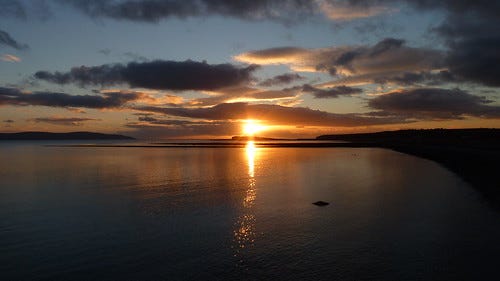
The wind blows where it wishes and you hear the sound of it, but do not know where it comes from and where it is going. John 3:874
This essay has talked about the wind, an invisible natural phenomenon which can only be grasped by its effects. I have also discussed here other invisible, but no less real concepts, such as energy and imaginal human artefacts such as REGOs which cannot be seen, but have real world consequences. I have also tried to talk about how our present energy systems may not be easily divorced from the social and political conditions from which they arise and whether alternative ways of talking and thinking about energy which are more amenable to human flourishing as well as respecting the planetary constraints that we all live under are possible.
What I have not yet mentioned is something else that is intangible, but no less important in my view, the cultural loss which happens when Irish generations to come cannot look out over a much treasured landscape immortalised in song and culture by their ancestors. Who will sing about watching the sun go down on Galway Bay if it is strewn with wind turbines? If we cannot even know what energy really is outside our equations, how can we know if we have lost something even more precious, which can never by captured by money or equations, that part of our collective consciousness- what our ancestors might have even called our soul?
Hear the wind blow, love, hear the wind blow, lean your head over, and hear the wind blow…75.
POST SCRIPT
76I believe that a desirable future depends on our deliberately choosing a life of action over a life of consumption, on our engendering a lifestyle which will enable us to be spontaneous, independent, yet related to each other, rather than maintaining a lifestyle which only allows to make and unmake, produce and consume - a style of life which is merely a way station on the road to the depletion and pollution of the environment. The future depends more upon our choice of institutions which support a life of action than on our developing new ideologies and technologies. Ivan Illich, 1973, Tools for Conviviality.
You can see here a map of the current wind conditions across the UK and Ireland:
https://windy.app/map/uk.
https://en.wikipedia.org/wiki/Justus_von_Liebighttps://lyricstranslate.com/en/irishscottishceltic-folk-connemara-cradle-song-lyrics.html
ibid
https://www.sceirderockswindfarm.ie/
https://en.wikipedia.org/wiki/Poolbeg_Generating_Station
https://www.gov.ie/en/press-release/9336b-irelands-ambitious-climate-act-signed-into-law/
https://www.greeninvestmentgroup.com/en/news/2021/gig-acquires-vanguard-offshore-wind-development-project-in-the-west-of-ireland.html
https://www.irishtimes.com/environment/2024/08/21/campaign-opposing-large-wind-farm-at-sceirde-rocks-in-connemara-being-scaled-up/
https://www.bbc.co.uk/news/world-europe-25966198
https://www.wind-watch.org/news/2022/01/26/members-of-the-oireachtas-among-objectors-to-clare-wind-farm/
https://en.wikipedia.org/wiki/The_Last_Man_Who_Knew_Everything
Thomas Young (1807). A Course of Lectures on Natural Philosophy and the Mechanical Arts, p. 52.
https://en.wikipedia.org/wiki/Isaac_Newton
https://www.goodreads.com/work/quotes/2809709-sense-and-sensibility
https://en.wikipedia.org/wiki/Justus_von_Liebig
https://en.wikipedia.org/wiki/Gaspard-Gustave_de_Coriolis
https://www.britannica.com/biography/James-Prescott-Joule
https://en.wikipedia.org/wiki/Albert_Einstein
This to me is a development away from classic objectivity ‘thing’ orientated physics to a more relational understanding for example the definition of:
Intra-action understands agency as not an inherent property of an individual or human to be exercised, but as a dynamism of forces (Barad, 2007, p. 141) in which all designated ‘things’ are constantly exchanging and diffracting, influencing and working inseparably. Intra-action also acknowledges the impossibility of an absolute separation or classically understood objectivity, in which an apparatus (a technology or medium used to measure a property) or a person using an apparatus are not considered to be part of the process that allows for specifically located ‘outcomes’ or measurement.
https://newmaterialism.eu/almanac/i/intra-action.html
https://www.sciencedirect.com/science/article/pii/S1877042809004704
https://www.marxists.org/reference/subject/philosophy/works/us/bridgman.htm
https://thinkingafterivanillich.net/wp-content/uploads/2023/06/Some-key-aspects-at-stake-in-the-social-construction-of-energy.pdf
ibid
ibid
https://www.irishmirror.ie/news/irish-news/reality-blackout-ireland-winter-no-27861800
https://www.gov.uk/government/news/energy-secretary-ed-miliband-sets-out-his-priorities-for-the-department
https://www.gov.uk/government/publications/net-zero-strategy
https://www.sunsave.energy/blog/dunkelflaute
https://theconversation.com/climate-scientists-concept-of-net-zero-is-a-dangerous-trap-157368
https://www.datacentermap.com/ireland/
https://www.itpro.com/infrastructure/data-centres/data-center-water-consumption-is-spiraling-out-of-control
https://www.scientificamerican.com/article/the-ai-boom-could-use-a-shocking-amount-of-electricity/
see previous essay Together in Electric Dreams Part I
As I used to work in the electricity industry, this is an area I know well, so well that even today I can drive around the UK and identify various key HV routes (that’s Harker to Blythe).
https://www.nationalgrid.com/the-great-grid-upgrade
https://research.manchester.ac.uk/en/publications/the-rise-of-anti-net-zero-populism-in-the-uk-comparing-rhetorical
https://www.bbc.co.uk/news/science-environment-53450688
https://www.dailymail.co.uk/news/article-139990/Afghanistans-cheap-heroin-flood-Britain.html
this is a huge simplification of course without cheap global shipping for instance, the farmers wouldn’t bother doing any of this as they wouldn’t be able to get it to market.
https://www.energy.gov/eere/articles/consumer-vs-prosumer-whats-difference
https://www.visionofearth.org/news/interview-with-wind-power-guru-paul-gipe/
1973, Tools for Conviviality, Ivan Illich
https://www.energy.gov/oe/august-2003-blackout
1973, Tools for Conviviality, Ivan Illich
ibid.
https://www.emarketer.com/content/google-faces-criticism-ai-ad-gemini-commercial-during-olympics-raises-concerns-over-ai-replacing-meaningful-human-interactions-creativi
https://archive.org/details/illich-conviviality
https://edition.cnn.com/2024/07/29/tech/googles-ai-olympics-ad-backlash/index.html
https://archive.org/details/energyequity00illi
ibid
https://www.ft.com/content/36e18def-3ecf-4810-8ca9-2f316f6a7bbd
https://www.cityam.com/fca-fines-macquarie-bank-for-fictitious-trades-after-serious-failings/
ibid
ibid
https://octopus.energy/green/
And if you think this sounds a bit Alice in Wonderland then please read on:
https://www.sabian.org/looking_glass6.php
'I don't know what you mean by "glory",' Alice said.
Humpty Dumpty smiled contemptuously. 'Of course you don't — till I tell you. I meant "there's a nice knock-down argument for you!"'
'But "glory" doesn't mean "a nice knock-down argument",' Alice objected.
'When I use a word,' Humpty Dumpty said, in rather a scornful tone, 'it means just what I choose it to mean — neither more nor less.'
'The question is,' said Alice, 'whether you can make words mean so many different things.'
'The question is,' said Humpty Dumpty, 'which is to be master — that's all.'
Alice was too much puzzled to say anything; so after a minute Humpty Dumpty began again. 'They've a temper, some of them — particularly verbs: they're the proudest — adjectives you can do anything with, but not verbs — however, I can manage the whole lot of them! Impenetrability! That's what I say!'
'Would you tell me please,' said Alice, 'what that means?'
'Now you talk like a reasonable child,' said Humpty Dumpty, looking very much pleased. 'I meant by "impenetrability" that we've had enough of that subject, and it would be just as well if you'd mention what you mean to do next, as I suppose you don't mean to stop here all the rest of your life.'
'That's a great deal to make one word mean,' Alice said in a thoughtful tone.
'When I make a word do a lot of work like that,' said Humpty Dumpty, 'I always pay it extra.'
ibid
https://www.bbc.co.uk/news/uk-wales-65026300
https://rosalux.eu/wp-content/uploads/kontext-import/documents/e/6/64eed1.pdf
https://www.irishtimes.com/business/2023/04/14/wind-farms-to-get-paid-for-electricity-they-do-not-supply/
ibid
https://theshiftproject.org/article/deployer-la-sobriete-numerique-rapport-shift/
1973, Tools for Conviviality, Ivan Illich
https://www.sciencedirect.com/science/article/abs/pii/S0301421510004611
https://biblehub.com/john/3-8.htm
ibid.












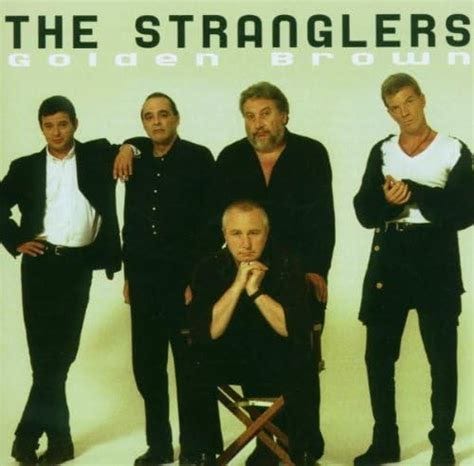

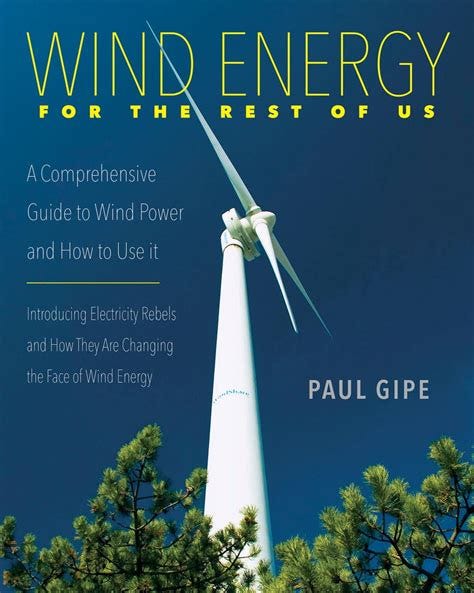
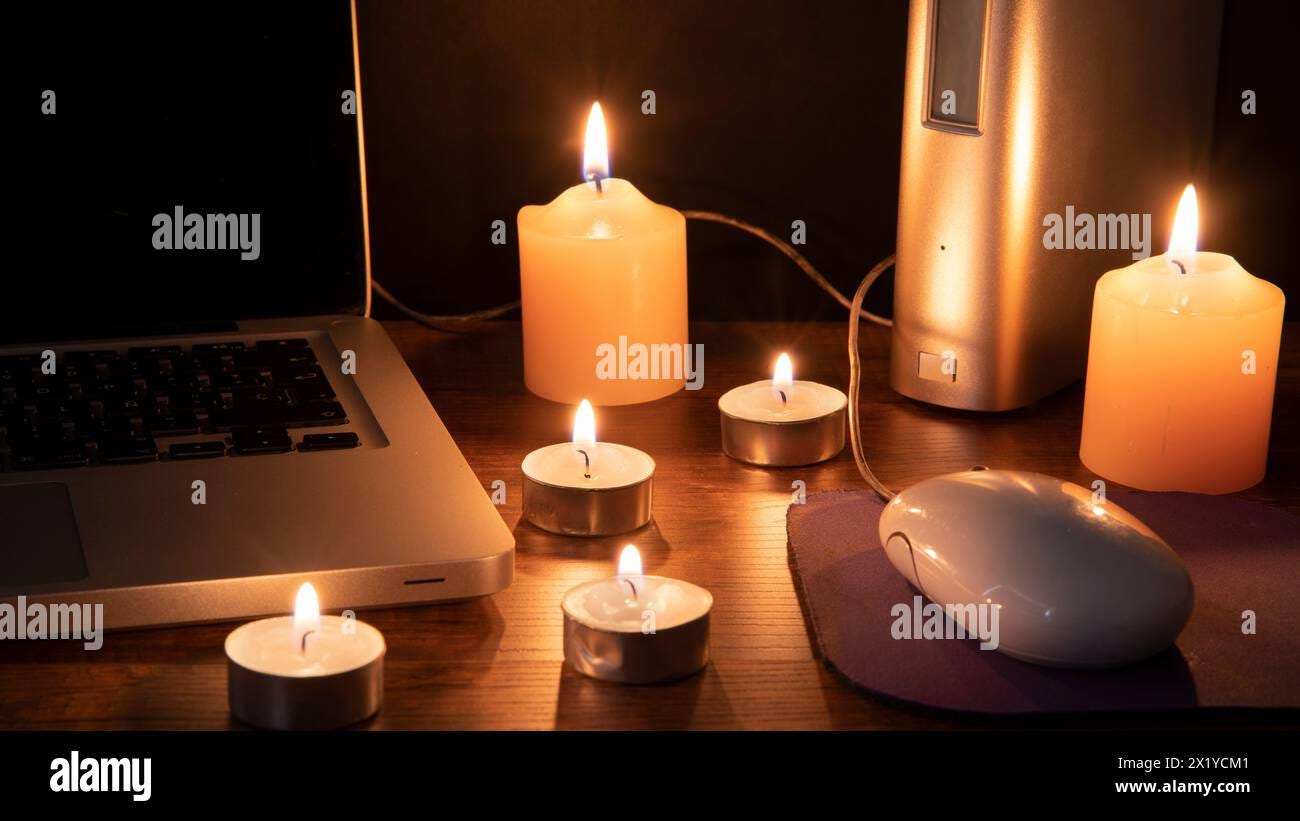
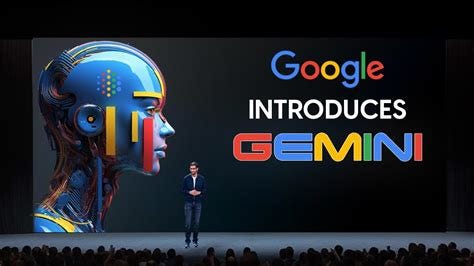
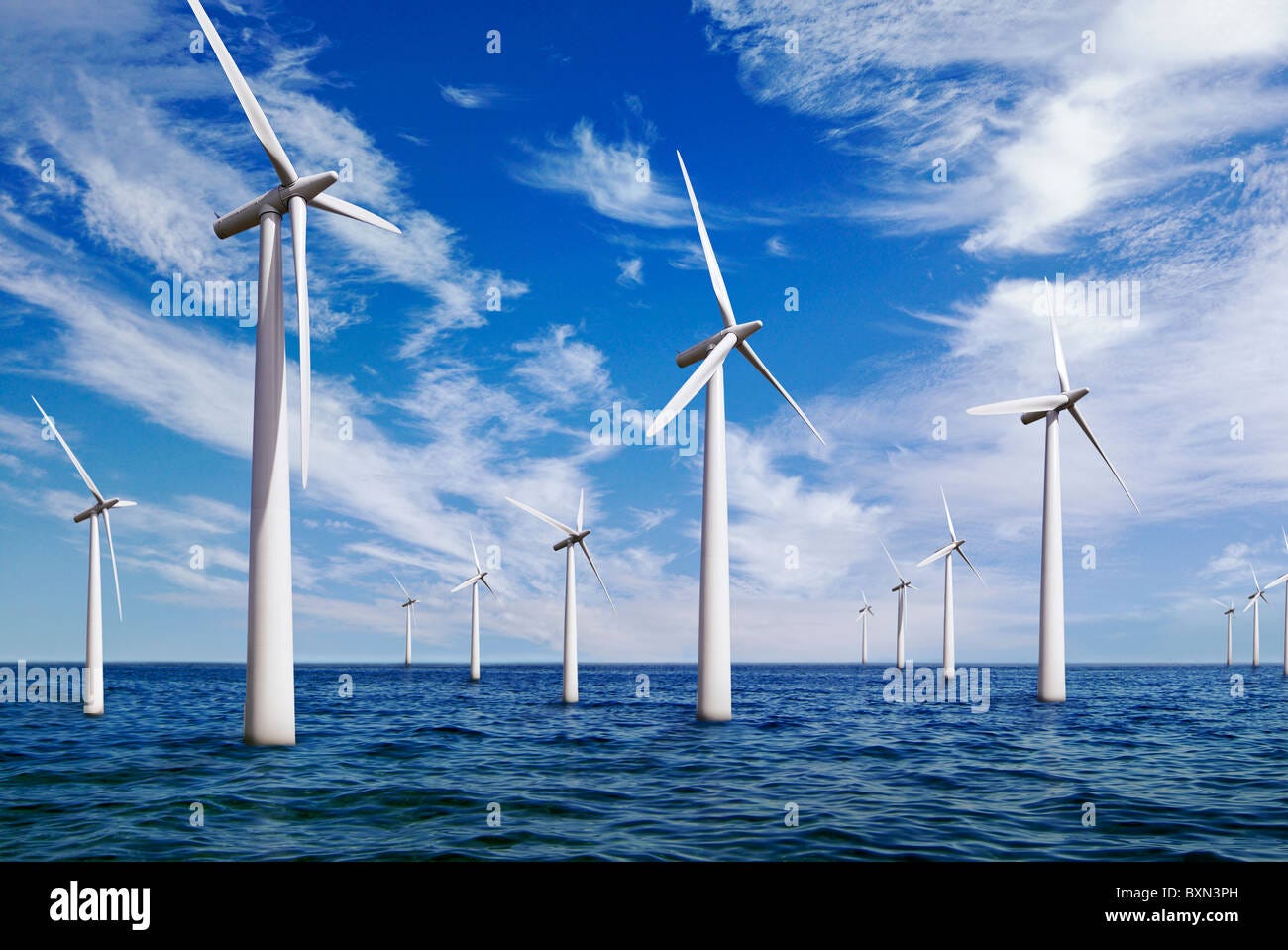


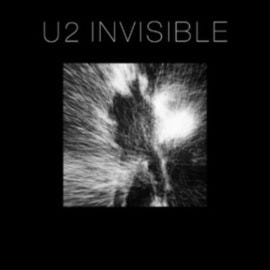
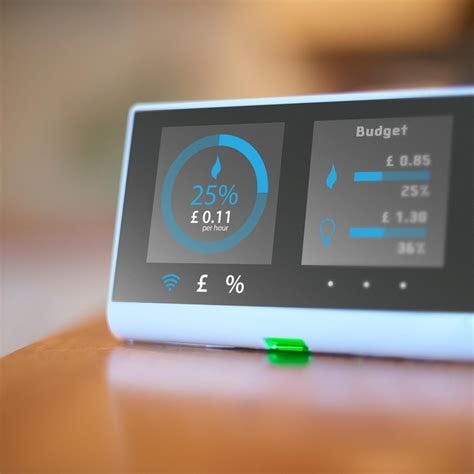

The long term implications for all of this will include population restrictions, more not less warfare, more poverty and reduced lifespans (particularly in the Global South) and more, not less, dictatorial control.
Interesting - is the real issue here the information a consumer of “energy” relies on and the need for a wider discussion in the context of a rapidly changing market for energy. Presumably the wind farms went through a resource consent process and it would be interesting to know what the submissions were…. in terms of scale, I guess the market for energy is there and there is a tension between environmental concerns and sufficient production. If the result of that is the public being mislead about the actual environmental impact ( because wind farms can’t replace fossil fuels in the way the average consumer might think they do), then a more transparent discussions around around the ethics of energy production ( in the sense that endless energy production may be neither possible or desirable) could be advanced.